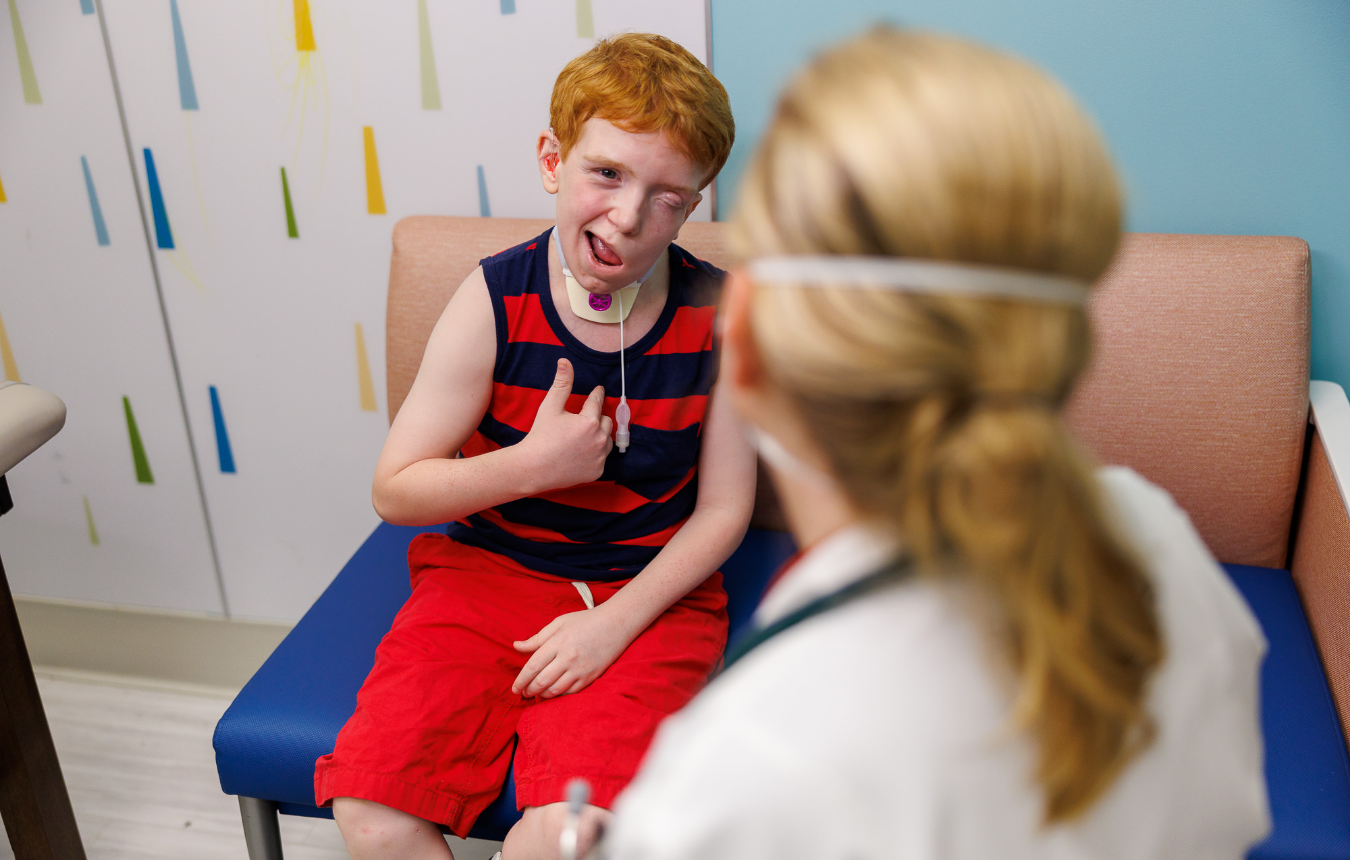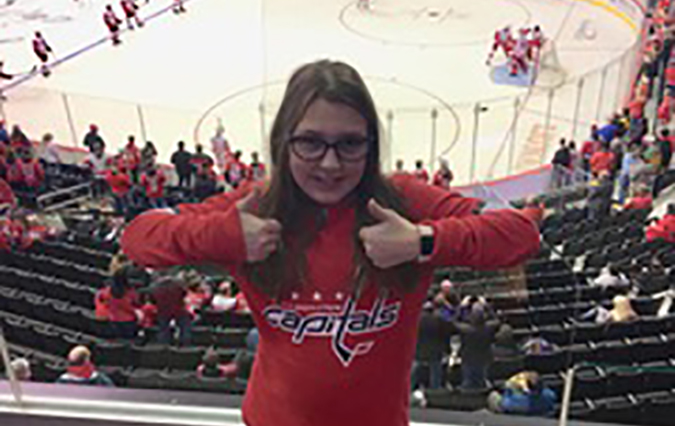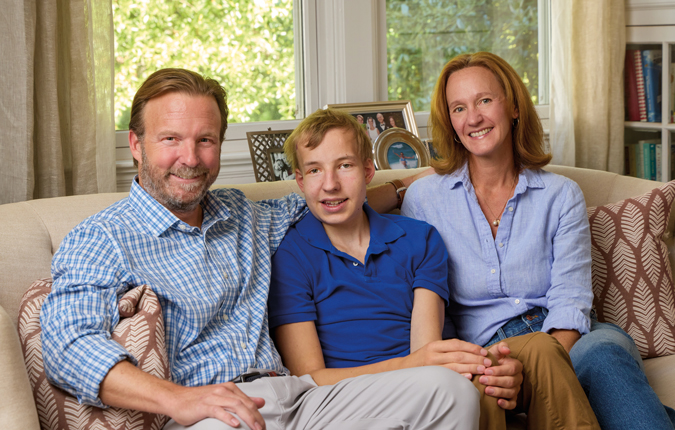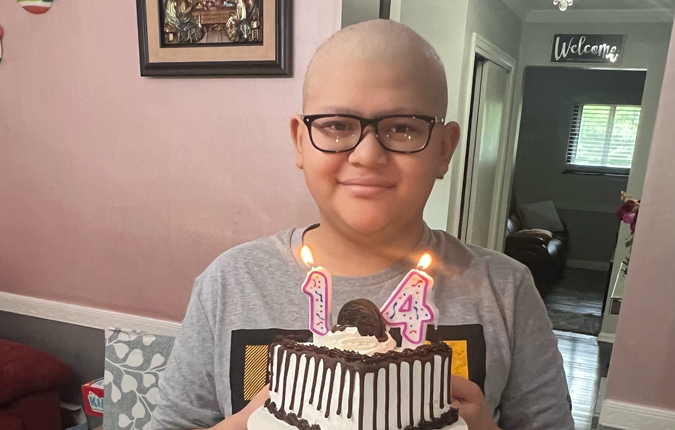Condition
Pediatric Brain Tumors
What You Need to Know
A brain tumor starts when cells in the brain change and grow out of control. As they continue to grow, they form a mass of cells that becomes a tumor.
Key Symptoms
The most common symptoms of brain tumors are:
- Headache
- Nausea and vomiting
- Trouble with movement
Diagnosis
Doctors typically diagnose brain tumors by:
- Neurological exam
- MRI
- CT scan
- Biopsy
- Blood tests
Treatment
Treatment may include:
- Surgery
- Radiation
- Chemotherapy
- Targeted therapies
Schedule an Appointment
Our pediatric specialists provide personalized care for your child’s physical, mental and emotional health needs. Meet the providers who treat brain tumor and schedule an appointment today.
Frequently Asked Questions
What are brain tumors in children?
A brain tumor is an abnormal growth of tissue in the brain. The brain is part of the central nervous system (CNS). The CNS also includes the spinal cord. The main parts of the brain are:
- Cerebrum. This is the front of the brain. The cerebrum has two halves, the right and left hemispheres. It controls thoughts, emotions, speech, and movement. It also helps with understanding information from the senses. This includes seeing, hearing, smelling, touching, and feeling pain.
- Cerebellum. This is the back of the brain. It organizes muscle movement and helps to maintain posture, balance, and equilibrium.
- Brainstem. This is the base of the brain. It includes the midbrain, the pons, and the medulla. It's the part of the brain that connects to the spinal cord. It plays a part in controlling muscles and sensations from the body. Part of the brainstem helps control breathing and the heartbeat. Many of the cranial nerves start in the brainstem. The cranial nerves carry messages between different parts of the upper body to the brain. These parts include the muscles in the face, mouth, and around the eyes.
Brain tumors start in the cells of the brain. They can be either of the following:
- Benign. This kind of tumor is not cancer. In most cases, once a benign tumor is removed, it doesn’t grow back. Most benign brain tumors don’t grow into nearby tissue. These tumors can cause symptoms depending on how big they are and where they are in the brain.
- Malignant. This kind of tumor is cancer. These brain tumors tend to grow fast, and grow into nearby tissue. Malignant brain tumors can spread to other parts of the brain or to the spinal cord but don’t usually spread to other parts of the body. They may grow back after treatment.
Brain tumors can happen at any age. Brain tumors in infants and children are very different from adult brain tumors.
What are the types of brain tumors in children?
The most common type of brain tumor is a glioma. Gliomas start in glial cells, which make up the tissue that supports the brain. There are different types of glioma:
- Astrocytoma. This type of tumor starts in glial cells called astrocytes. It's the most common brain tumor in children. It can start anywhere in the brain or spinal cord.
- Brain stem glioma. This tumor is found in the brainstem. Most brainstem tumors can’t be removed with surgery.
- Oligodendroglioma. This tumor grows in the cells called oligodendrocytes. They make the fatty covering of nerve cells. The tumor usually grows slowly. But it tends to grow into brain tissue. This makes it very difficult to remove with surgery.
- Ependymoma. This tumor grows in the lining of the ventricles that hold cerebrospinal fluid (CSF), or in the spinal cord. In children, they're most often near the cerebellum. They can block the flow of the CSF, the fluid that surrounds the brain and spinal cord. This may cause increased pressure in the skull.
- Optic nerve glioma. This kind of tumor is found in or around the nerves that send messages from the eyes to the brain. It often affects vision. It can also affect hormones since it’s usually at the base of the brain where hormone control is located.
Other less common types of brain tumors include:
- Embryonal tumors. These tumors are found more often in children than in adults. The most common type in children is called a medulloblastoma. It starts in the cerebellum. These tumors tend to grow and spread quickly.
- Craniopharyngioma. This rare benign tumor starts near the pituitary gland. It's usually slow growing. But it can cause symptoms if it presses on the pituitary gland or nearby nerves.
- Mixed glial and neuronal tumors. These tumors are made up of glial and nerve cells. They're slow growing and are found in the cerebrum.
- Choroid plexus tumor. This is a rare tumor that starts in the ventricles of the brain. Most are benign.
- Schwannoma. This kind of tumor starts in myelin-making cells that cover nerves. It’s most common in the nerve in the inner ear that helps with balance. If it grows there, the tumor is called a vestibular schwannoma or an acoustic neuroma. This type of tumor is usually benign.
What causes a brain tumor in a child?
Which children are at risk for a brain tumor?
Children with certain genetic conditions have an increased risk for tumors of the central nervous system. This includes children with:
- Neurofibromatosis type 1 (von Recklinghausen disease) and type 2.
- Von Hippel-Lindau disease.
- Li-Fraumeni syndrome.
- Hereditary retinoblastoma.
- Tuberous sclerosis.
- Gorlin syndrome.
- Cowden syndrome.
- Turcot syndrome.
- Rubinstein-Taybi syndrome.
Children who have had radiation therapy for other cancers of the head are also at an increased risk for a new brain tumor.
What are the symptoms of a brain tumor in a child?
Symptoms vary depending on how big the tumor is, how fast it's growing, and where it is in the brain.
Growing tumors may cause increased pressure on the brain in the limited space inside the skull. This is called increased intracranial pressure. But this isn’t usually the case in babies because their skull bones haven’t fully grown together.
Pressure on the brain may cause symptoms like:
- Headache
- Enlarged head in infants
- Nausea and vomiting
- Personality changes
- Irritability
- Sleepiness
- Seizures
- Vision, hearing and speech problems
Symptoms of brain tumors in the cerebrum can include:
- Seizures
- Changes in vision or hearing
- Trouble talking or understanding
- Weakness or paralysis in part of the body (often just one side)
- Mood changes, such as feeling depressed
Symptoms of brain tumors in the cerebellum can include:
- Trouble swallowing
- Trouble with eye movement
- Changes in speech
- Clumsy movements of the hands, arms, feet or legs
- Problems walking (ataxia)
Symptoms of brain tumors in the brainstem can include:
- Weakness
- Balance problems
- Trouble walking (ataxia)
- Muscle stiffness
- Trouble with eye or other facial movement
- Trouble swallowing
- Double vision
- Hearing loss
- Bowel or bladder problems
The symptoms of a brain tumor can be like many other health conditions. Make sure your child sees a health care provider for a diagnosis.
How is a brain tumor diagnosed in a child?
Your child's health care provider will ask about your child's health history and symptoms. An exam will be done. It will include a neurological exam. This tests reflexes, muscle strength, eye and mouth movement and coordination. Your child's provider may refer your child to a doctor specializing in the nervous system (neurologist or neurosurgeon) or to a cancer specialist (oncologist). Your child may need tests such as:
- MRI. An MRI uses magnets, radio waves, and a computer to make detailed pictures of the inside of the body. A substance called gadolinium may be put into your child's blood through a vein. It helps to show the tumor more clearly.
- CT scan. A CT scan uses a series of X-rays and a computer to make detailed pictures of the inside of the body. It might be used if an MRI can't be done or in some emergencies.
- Lumbar puncture. A special needle is put into the lower back, into the spinal canal. This is the area around the spinal cord. A small amount of cerebrospinal fluid (CSF) is removed and sent for testing. CSF is the fluid around the brain and spinal cord. This test is done to check the spinal fluid for cancer cells.
- Positron emission tomography (PET) scan. For this test, a radioactive sugar is put into the bloodstream. Cancer cells use more sugar than normal cells, so the sugar will collect in cancer cells. A special camera is then used to see where the radioactive sugar collects in the body. A PET scan can sometimes find cancer cells in other parts of the body, even when they don’t show up on other tests. This test is often used in combination with a CT scan. This is called a PET/CT scan.
- Biopsy. Tumor cells are removed and sent to a lab for testing. A biopsy is done to find out the type of tumor and how quickly it's likely to grow.
- Blood tests. Blood tests may be done to check for substances that are released by some tumors. These are called tumor markers.
These tests will show where the tumor is, how big it is, and if it's cancer (malignant) or not cancer (benign). If your child has cancer, these tests provide important information when deciding how to best treat the cancer and what outcomes to expect. Some types of cancer use standard staging systems of numbers and letters to note this information and whether the cancer has spread. Brain tumors are not staged this way because they usually don't spread. Instead, when planning treatment and predicting outcomes, your child's providers will look at things like:
- The exact type of tumor.
- The location and size of the tumor.
- Whether the cancer has spread to the CSF, spinal cord, more than one part of the brain, or beyond the brain.
- How the tumor is affecting your child.
- Your child's age.
- Whether the tumor can be removed with surgery.
The provider will also consider the grade of the cancer cells. This is a measure of how quickly the cells are likely to grow and spread. It's based on how much the cancer cells look like normal cells. High-grade cancer cells look very different from normal cells and are more likely to grow and spread quickly.
Your child's provider will talk to you about these things and recommend treatment for your child. These can be long and complex discussions. Be sure to ask questions and have the provider explain things to you in a way you understand so you can make the best decisions for your child.
What type of care does your child receive at the Children’s National Brain Tumor Institute?
Children’s National Brain Tumor Institute is the only program in the Washington, D.C., area treating all forms of pediatric brain cancer. From experimental medications to minimally invasive neurosurgery, we offer a broad range of innovative treatments.
Pediatric brain tumors are not the same as adult brain tumors. At a molecular level, they are quite different and require special care. At Children’s National, you can count on your child receiving the best available pediatric treatments, thanks to our team approach.
We hold meetings (tumor boards) on a regular basis to discuss complex cases. During these meetings, we discuss the unique aspects of your child’s condition. This approach helps us develop personalized treatment plans.
Our team also includes experts in neuropsychology. Through regular testing, we determine the effects of treatment on your child’s cognitive development, which helps us plan for his or her future needs.
What brain tumor treatments are available at Children's National?
We are consistently ranked among the top hospitals in the nation by U.S. News & World Report, distinguished for our pediatric care.
At Children's National, we offer the full range of pediatric brain tumor therapies, including:
- Surgery
- Radiation
- Chemotherapy
- Targeted therapies
How can I help my child live with a brain tumor?
A child with a brain tumor needs ongoing care. Your child will be seen by oncologists and other health care providers to treat any late effects of treatment and to watch for signs or symptoms of the tumor returning. Your child will be checked with imaging tests and other tests. And your child may see other providers for problems from the tumor or from treatment. For instance, your child may see an eye care provider (ophthalmologist) for vision problems.
Your child may need therapy to help with movement and muscle strength. This may be done by physical and occupational therapists. If your child's speech is affected, they may need help from a speech therapist. Your child may also need the help of other therapists for learning or emotional problems.
You can help your child manage his or her treatment in many ways. For instance:
- Your child may have trouble eating. A dietitian may be able to help.
- Your child may be very tired. They will need to balance rest and activity. Encourage your child to get some exercise. This is good for overall health. And it may help to reduce tiredness.
- Get emotional support for your child. A counselor, psychologist, or child support group can help.
- Make sure your child attends all follow-up appointments.
Patient Stories
Departments that Treat Brain Tumors

Neurology
Our pediatric neuroscience team is the nation's largest, bringing extensive experience to patients and families. Each of our neurologists is specially trained in child neurology with expertise in specific areas. We use advanced diagnostic tests and minimally invasive, effective treatments for complex neurological conditions.
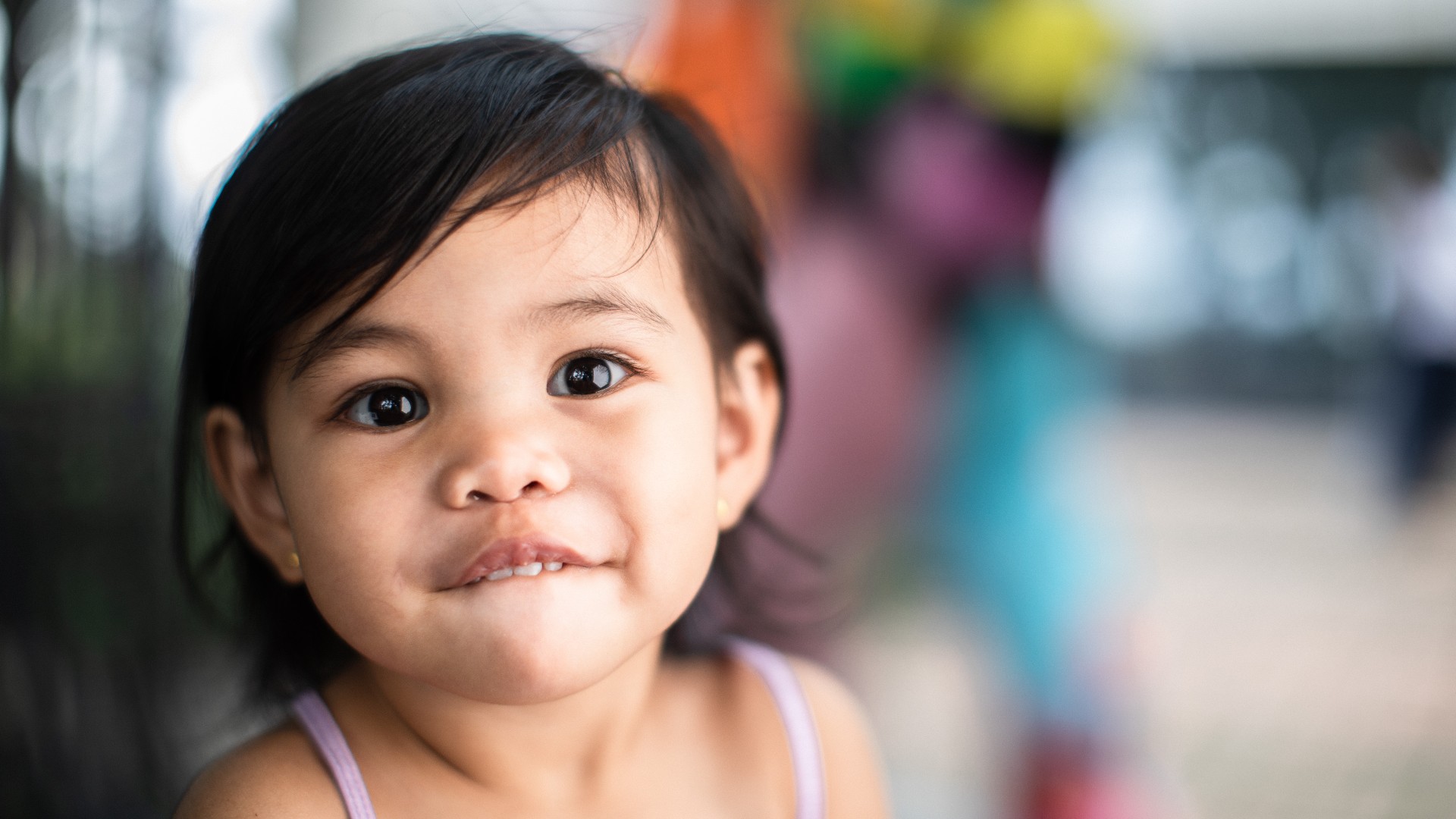
Blood and Marrow Transplantation
Our program is one of the only dedicated pediatric bone marrow transplant programs in the region. We offer advanced treatments for children with leukemia and blood disorders like sickle cell disease. Learn more about this program.
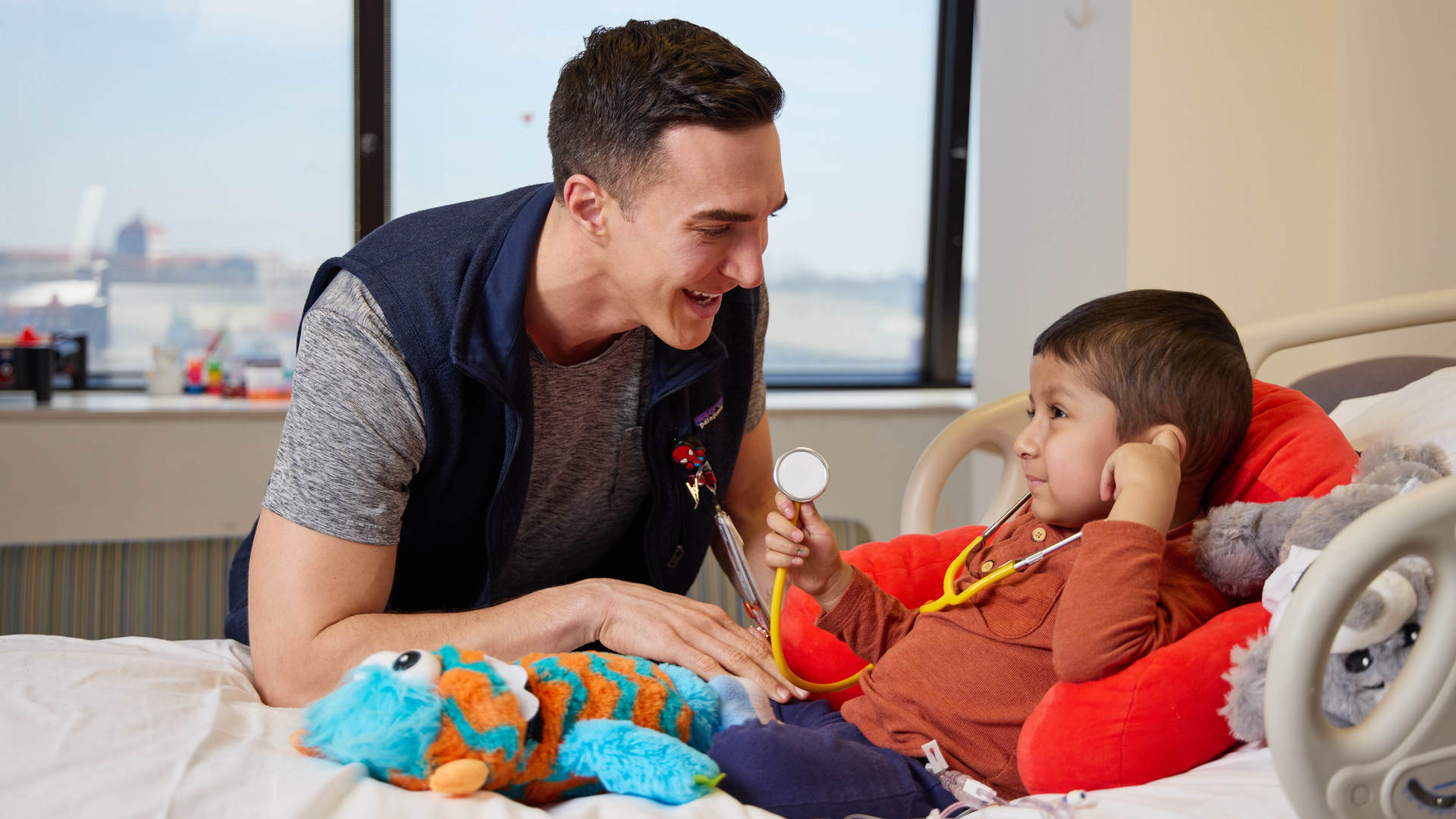
Oncology
The Oncology Program at Children's National is ranked one of the best cancer centers for children by U.S. News & World Report thanks to our high level of experience and expertise. Learn more about this program.
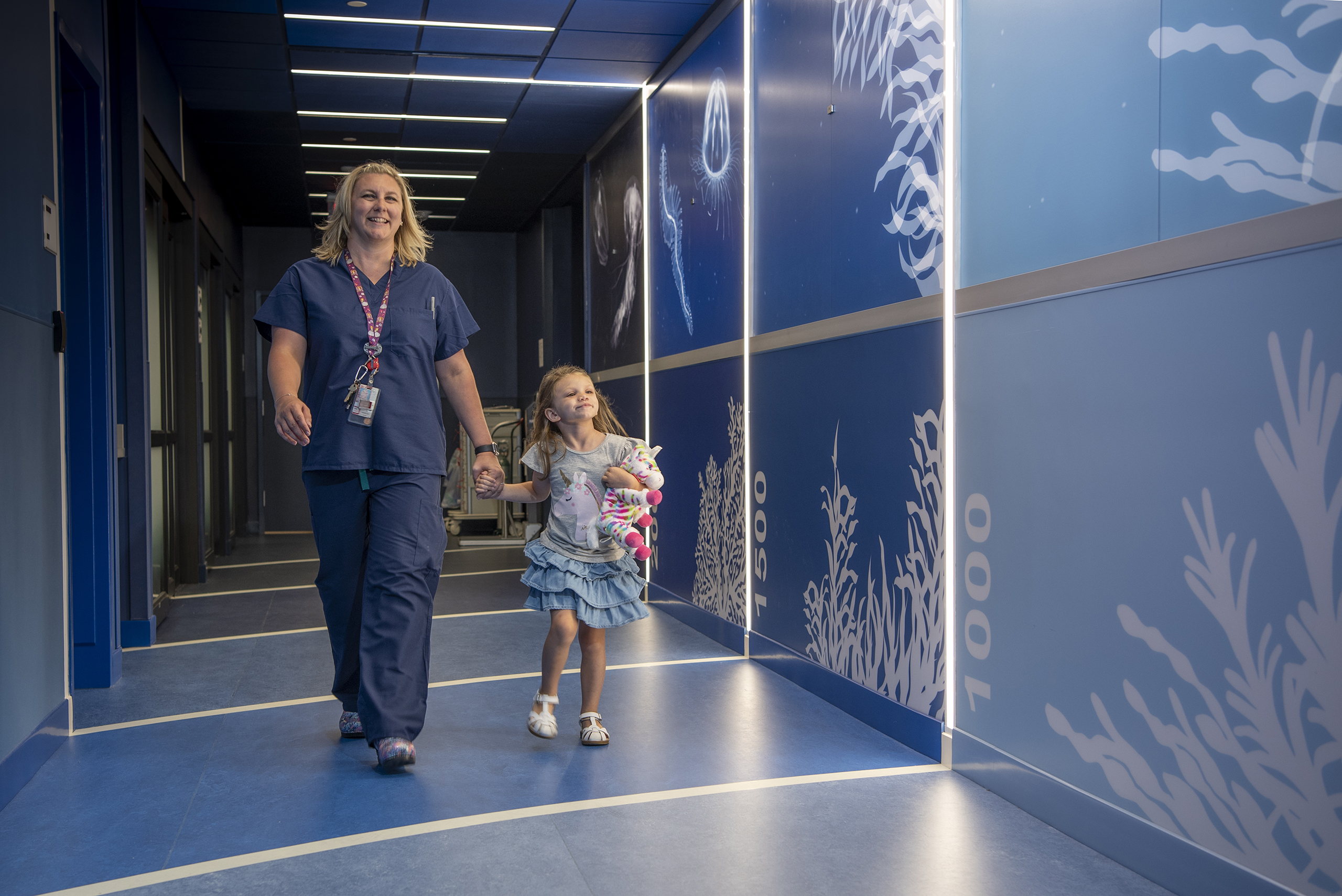
Neurointerventional Radiology Program
Our Neurointerventional Radiology Program targets the tiniest spaces in a child's brain or spine using catheters and imaging to treat vascular conditions without more invasive surgery.
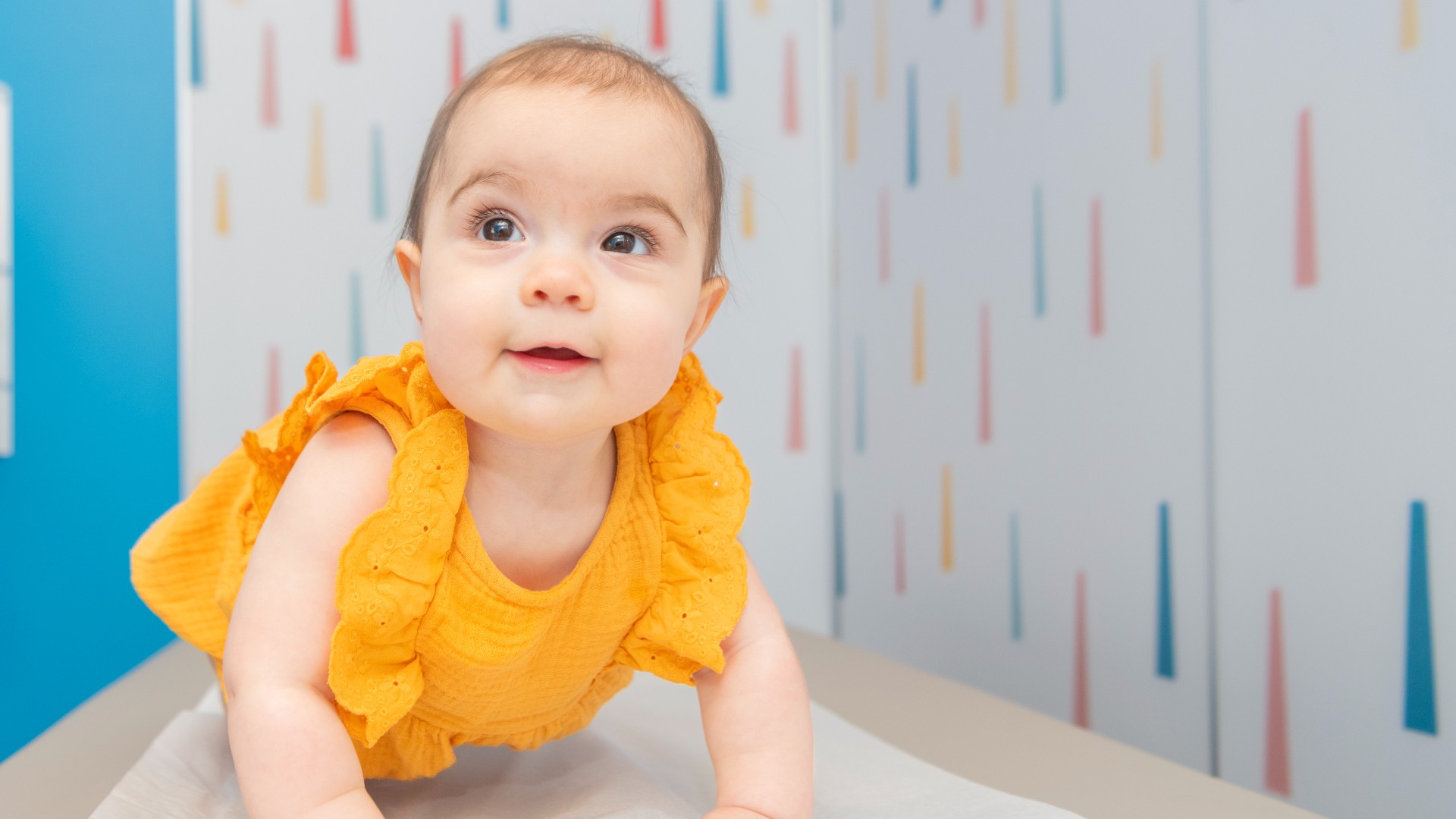
Neurosurgery
Our neurosurgery experts provide advanced care for newborns and children with complex neurological conditions.
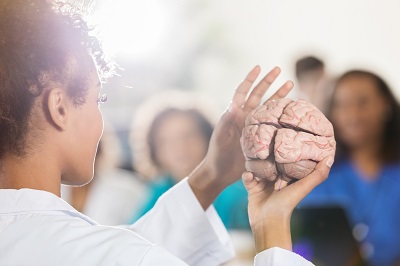
Neuropsychology
Children's National Hospital has some of the world's foremost experts in care for children with complex neurodevelopmental disorders affecting the brain and central nervous system.
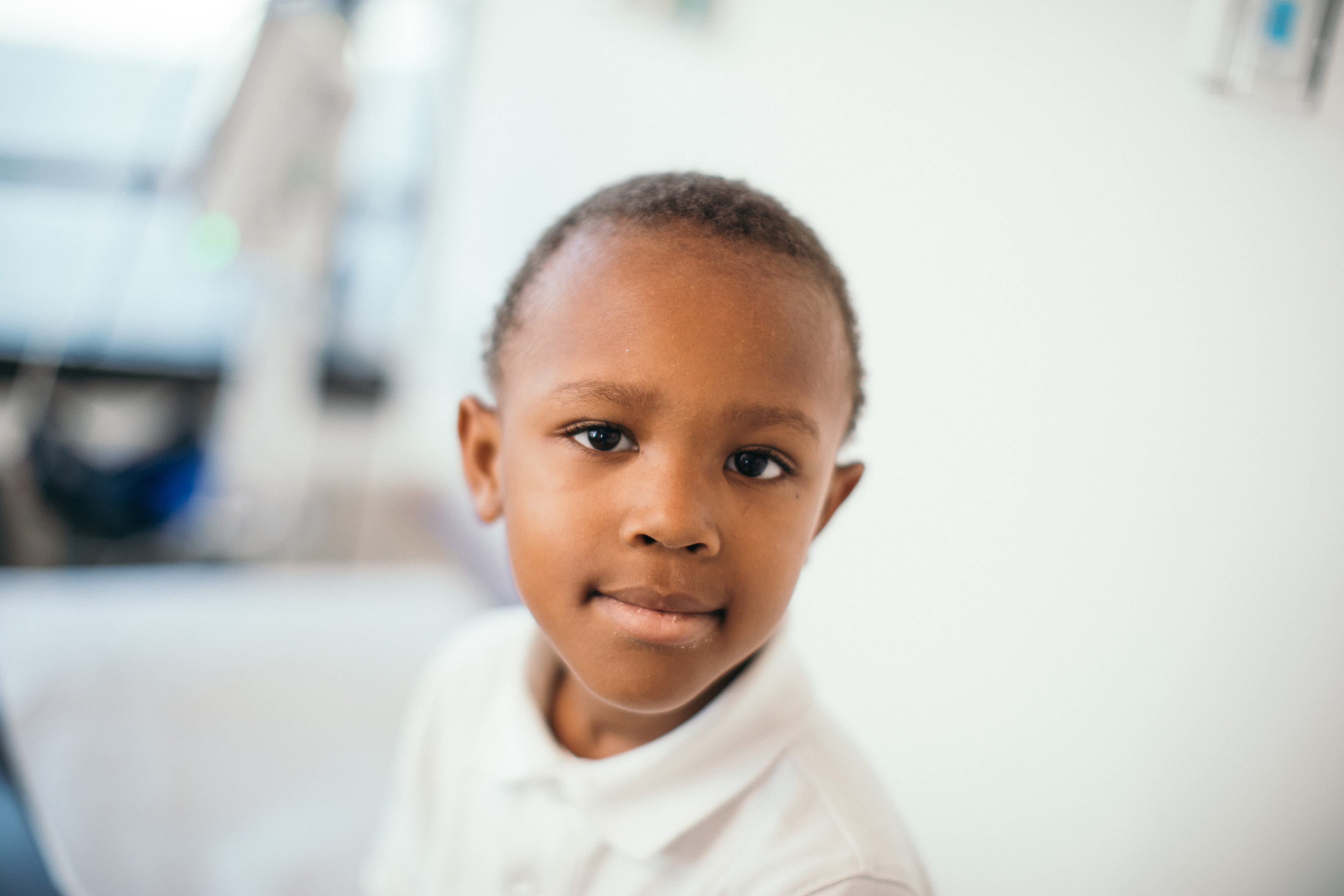
Neuropsychology Outpatient Evaluation
Neurological disorders and injuries that affect the brain, including developmental problems and injury from an accident or birth trauma, can influence the way a child thinks, learns, behaves and expresses emotions. Our program offers evaluations of these conditions and will connect your child with the care they need.

Experimental Therapeutics Program
With exclusive access to new treatments, the Experimental Therapeutics Program at Children's National offers renewed hope for a good outcome to all families.
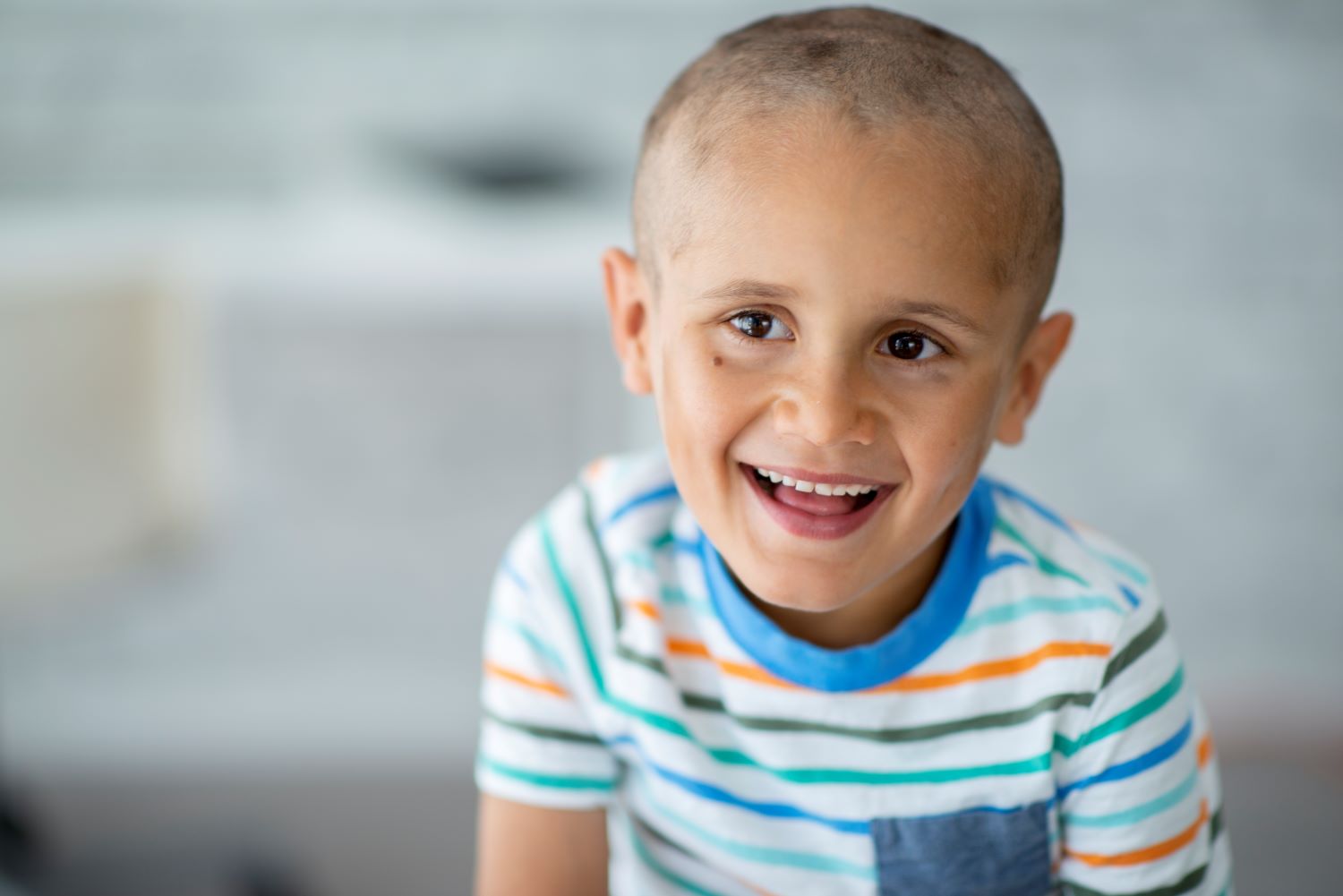
Brain Tumor Institute (Neuro-oncology)
We bring together a comprehensive team of pediatric oncology and neurology experts, giving children with brain tumors effective, personalized care. Learn more about our neuro-oncology program.

Help Kids and Make a Difference
Invest in future cures for some of life's most devastating diseases. Give today to help more children grow up stronger.


